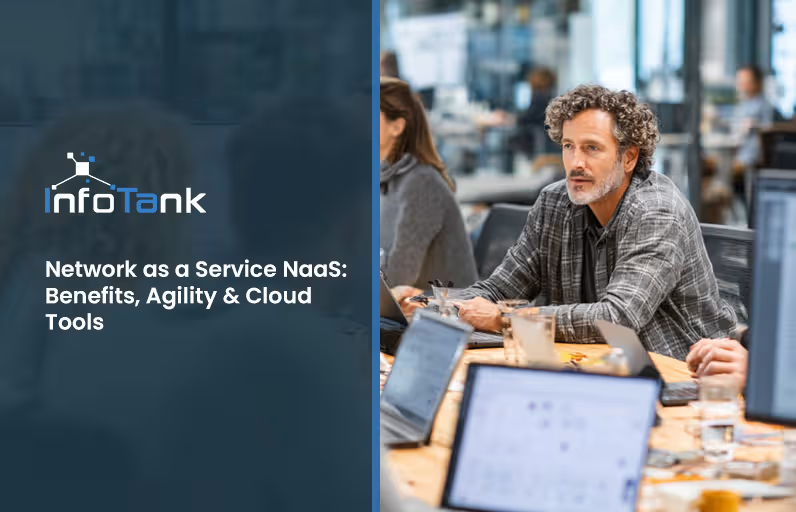
The Ultimate Guide to Cloud Infrastructure and Server Solutions
In today’s digital economy, businesses of all sizes are transforming the way they manage infrastructure—and it’s all driven by the evolution of cloud infrastructure and server technology. Whether you're a growing startup or an established enterprise, your digital foundation is only as strong as the systems supporting it.
From public cloud environments to hosted private cloud and hybrid cloud infrastructure, this guide explores how infrastructure as a service, cloud computing models, and server architecture all contribute to more flexible, scalable, and cost-effective operations.
What is cloud infrastructure?
Cloud infrastructure refers to the collection of hardware and software components—such as servers, storage, networking, and virtualization—that support the computing requirements of a cloud environment. Unlike traditional physical infrastructure, cloud infrastructure is delivered as a service over the internet by a cloud service provider.
Businesses use cloud infrastructure to store data, host applications, manage workloads, and deliver computing services without needing to maintain costly on-premises infrastructure. This enables greater agility, scalability, and resilience.

How cloud infrastructure works
To understand how cloud infrastructure works, consider it as the foundation of all cloud computing services. It includes components such as cloud servers, storage services, and virtualized networking—all orchestrated through management tools and delivered by cloud service providers.
The infrastructure supports various cloud computing models such as public cloud, private cloud, and hybrid cloud. It also provides resources through delivery models like infrastructure as a service (IaaS), which lets users rent cloud infrastructure based on usage, reducing the need for physical servers or storage.
Key components of cloud infrastructure
The main components of cloud infrastructure are:
- Compute resources: Cloud servers (physical or virtual) that process workloads.
- Storage: Cloud storage systems that retain business-critical data and backups.
- Networking: Software-defined networking that ensures data movement within and across clouds.
- Virtualization: The creation of virtual resources that enhance scalability and resource efficiency.
- Management tools: Platforms used to monitor and orchestrate cloud environments.
These components work together to create a flexible infrastructure platform that adapts to the changing needs of businesses.

Cloud infrastructure vs traditional infrastructure
Unlike on-premises IT infrastructure, cloud infrastructure provides access to cloud resources on demand, offering major advantages in scalability, flexibility, and cost efficiency.
Cloud infrastructure is available globally, allowing businesses to deploy workloads closer to their users. In contrast, traditional infrastructure requires purchasing and maintaining hardware in a data center, limiting scalability and increasing costs.
Cloud infrastructure also supports automated scaling and advanced disaster recovery, helping businesses secure their infrastructure and avoid downtime.
The different types of cloud infrastructure
There are several cloud infrastructure delivery models businesses can adopt based on their specific needs:
- Public cloud: Hosted and managed by a third-party cloud provider. Offers cost-effective access to cloud computing services, ideal for startups and agile teams.
- Private cloud: A dedicated cloud environment managed internally or by a service provider. Offers enhanced security and control.
- Hybrid cloud: A combination of public and private cloud infrastructure, enabling data and applications to move between environments for increased flexibility.
Each model plays a unique role depending on security, compliance, and performance needs.

Cloud architecture explained
Cloud architecture refers to the blueprint that defines how the components of cloud infrastructure interact. It includes front-end interfaces, back-end platforms, delivery models, and service layers like SaaS, PaaS, and IaaS.
This architecture allows users to access computing services via web browsers or APIs, enabling everything from basic storage services to complex enterprise cloud applications. Cloud architecture supports automation, redundancy, and high availability, all critical for modern IT operations.
Using cloud infrastructure for business growth
Using cloud infrastructure allows businesses to focus on innovation instead of hardware management. Here’s how it supports growth:
- Scalability: Easily increase or decrease resources as demand fluctuates.
- Accessibility: Access to cloud resources from anywhere with internet connectivity.
- Cost-efficiency: Pay only for what you use, reducing capital expenditures.
- Security: Cloud providers offer advanced tools to secure infrastructure and protect data.
- Agility: Quickly deploy new services and scale operations in minutes.
These benefits empower businesses to innovate rapidly and respond to market changes more effectively.
Disadvantages of cloud infrastructure
While cloud infrastructure offers many advantages, there are also some drawbacks to consider:
- Unexpected costs: Cloud usage can lead to unforeseen charges without proper monitoring.
- Security concerns: Sensitive data in the cloud can be at risk if not protected properly.
- Limited control: Relying on a cloud service provider may reduce customization.
- Downtime risks: Dependence on internet connectivity can lead to service disruptions.
- Vendor lock-in: Migrating from one provider to another can be complex and costly.
Being aware of these disadvantages helps organizations plan more strategically and mitigate potential issues.
Cloud infrastructure services and providers
Cloud infrastructure services are offered by major cloud providers such as Amazon Web Services (AWS), Microsoft Azure, and Google Cloud. These public cloud providers offer a wide range of infrastructure and services to accommodate diverse workloads.
Many providers offer managed private cloud solutions, allowing organizations to offload management while maintaining control and compliance. Businesses should assess needs such as location, support, compliance, and pricing when selecting a cloud provider.
You can also explore authoritative insights on cloud computing from sources like the U.S. National Institute of Standards and Technology (NIST).
The hybrid cloud infrastructure approach
A hybrid cloud approach combines the best of both public and private cloud environments. Businesses can keep sensitive data in private cloud infrastructure while using public cloud services for scalability and agility.
Hybrid cloud infrastructure offers:
- Enhanced control over data and applications
- Improved performance by distributing workloads
- Compliance flexibility for regulated industries
It’s a compelling option for businesses that want to optimize costs while maintaining security and compliance.
Final thoughts
Cloud infrastructure is the cornerstone of digital transformation. Whether leveraging cloud servers, building out hybrid cloud infrastructure, or using cloud computing services to scale applications, businesses now have access to dynamic, efficient IT environments.
Understanding the components of cloud infrastructure, the different types of cloud, and the pros and cons of various delivery models empowers organizations to make informed decisions. As the cloud continues to evolve, so will the strategies that businesses use to harness its full potential.
Frequently asked questions
What are the key components of cloud infrastructure?
The key components of cloud infrastructure include compute resources (such as cloud servers), storage, networking, virtualization, and management tools. These components form the backbone of cloud computing environments.
How does cloud infrastructure differ from traditional infrastructure?
Cloud infrastructure refers to resources delivered over the internet and managed by a cloud provider, while traditional infrastructure relies on physical hardware and on-premises data centers. Cloud infrastructure enables scalability, flexibility, and reduced operational costs.
What are the types of cloud computing services?
The main types of cloud computing services are infrastructure as a service (IaaS), platform as a service (PaaS), and software as a service (SaaS). These services allow users to access everything from storage and servers to full applications via the cloud.
What are the disadvantages of cloud infrastructure?
Disadvantages include potential security vulnerabilities, unexpected cloud costs, limited control over infrastructure, downtime due to internet dependency, and vendor lock-in. Careful planning and the use of management tools can help mitigate these risks.
How does a hybrid cloud infrastructure benefit businesses?
Hybrid cloud infrastructure enables businesses to combine public cloud agility with private cloud control. It supports data portability, scalability, and improved performance, while also helping to meet compliance and security requirements.



